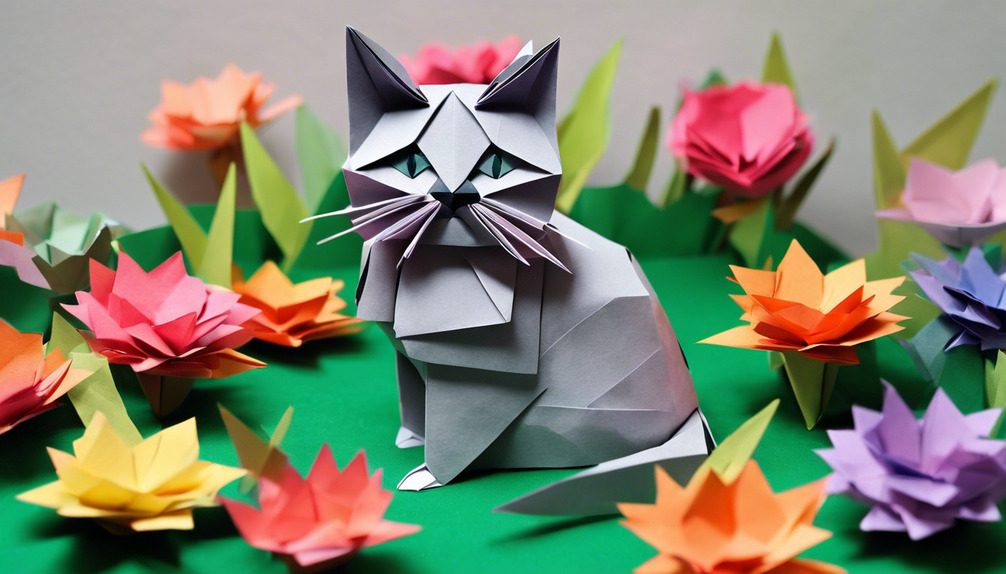As our cats gracefully age, their needs change, and maintaining a healthy weight becomes an essential part of their overall well-being. You’ve probably noticed some changes in your older cat’s activity level and appetite, and you want to ensure they stay happy and healthy for years to come.
Understanding the unique weight control strategies for older cats is crucial, and by implementing these five essential techniques, you can make a significant difference in your cat’s health and quality of life.
Key Takeaways
- Schedule a veterinary examination and diagnostic testing before starting a weight loss program.
- Determine the ideal weight range for your cat based on factors such as current weight, body condition, and overall health.
- Gradually transition your cat to a new diet over 7-10 days to avoid digestive upset.
- Incorporate regular exercise and playtime sessions to help burn calories and maintain a healthy weight.
Consulting With Your Veterinarian
Before embarking on any weight loss program for your older cat, it’s crucial to schedule a veterinary examination and diagnostic testing to ensure their health and safety. Consulting with your veterinarian is the first and most important step in helping your senior cat achieve a healthy weight.
Your vet will assess your cat’s current weight, overall health, and any underlying medical conditions that could affect their weight loss journey. They’ll also determine the ideal body weight and the number of calories required for your cat’s weight loss program. Consulting with your vet is essential as they can recommend the best weight loss diet tailored to your cat’s particular situation.
Your vet will provide guidance on portion control, the type of food to be fed, and the gradual nature of the weight loss process. It’s vital to follow their advice closely to ensure your cat’s health and safety.
Remember that your vet is a valuable resource in your cat’s weight loss journey, and their expertise will greatly contribute to a successful outcome.
Determining the Ideal Weight
To determine the ideal weight for your older cat, your veterinarian will assess various factors including their current weight, body condition, and overall health. It’s important to understand that each cat is unique, and their ideal weight can vary based on factors such as breed and bone structure. Your vet will consider these aspects when determining the healthy weight range for your cat.
| Ideal Weight Range | Description | Emotional Response |
|---|---|---|
| 8-10 lbs | Optimal weight for most older cats | Comfort and ease |
| Below 8 lbs | Underweight | Concern and empathy |
| Above 10 lbs | Overweight or obese | Motivation for change |
Understanding your cat’s ideal weight is crucial for their overall well-being. Overweight cats are at a higher risk of developing health issues, so helping your cat lose weight if they are above the healthy range is essential. Your veterinarian can guide you with a suitable feeding schedule and the right amount of cat food to assist your cat in achieving a healthy weight. By working together, you can support your older cat in maintaining a healthy weight and enjoying a higher quality of life.
Gradual Diet Transition
When transitioning your older cat to a new diet, it’s important to do so gradually to avoid digestive upset and allow your cat to adjust comfortably. Start by slowly mixing the new food with the old over 7-10 days. This gradual transition helps prevent food aversions, ensuring your cat maintains proper nutrition as they lose weight.
It’s crucial to monitor your cat’s response to the new diet for any adverse reactions. By consulting your veterinarian for guidance on the best way to transition your cat’s diet, you can ensure that the process is tailored to your cat’s specific health needs. This approach also supports your cat’s overall health and well-being during the weight loss journey.
Remember that a gradual transition not only eases your cat into the new diet but also minimizes the risk of gastrointestinal disturbances. Ensuring that the new diet is well-balanced in terms of calories and nutrients is essential.
Your dedication to this gradual transition will greatly contribute to your cat’s successful weight management and improved health.
Incorporating Exercise
Encourage your older cat to stay active and healthy by providing interactive toys and engaging in daily playtime sessions. Regular exercise is essential for overweight or obese cats. It helps in burning calories and maintaining a healthy weight. Incorporate exercise into your cat’s routine by using feeding puzzles or toys during mealtime to promote physical effort.
Aim for at least 30 minutes of playtime each day to keep your cat on a weight control regimen. Consider harness and leash walks to add variety and physical activity. Monitor changes in weight and stay consistent with the exercise routine to ensure progress. Remember that the amount of weight an obese cat needs to lose should be approached gradually and sensibly.
Complement the exercise with small, portion-controlled meals to manage the amount of calories consumed. By providing opportunities for physical activity and monitoring the diet, you can effectively support your cat in achieving a healthy weight and an active lifestyle.
Monitoring and Adjusting Progress
As your older cat engages in regular exercise and portion-controlled meals, the next step is to monitor and adjust the progress towards achieving a healthy weight and active lifestyle. Keeping a close eye on your cat’s weight loss journey is crucial for their wellbeing.
Here are some essential steps to effectively monitor and adjust your older cat’s progress:
- Regular Weigh-Ins: Weigh your cat consistently to track their weight loss progress and ensure it aligns with the desired trajectory.
- Maintain a Weight Loss Journal: Record your cat’s food intake, activity levels, and any changes in behavior to identify patterns and make informed adjustments.
- Adapt Feeding and Exercise Plans: Be flexible with your cat’s regimen and make necessary adjustments based on their progress, ensuring it aligns with their ideal body weight goals.
- Consult Your Veterinarian: Seek professional guidance to tailor the weight loss program to your cat’s specific needs and address any potential health concerns promptly.
Frequently Asked Questions
How Can I Get My Senior Cat to Lose Weight?
You can help your senior cat lose weight by adjusting their diet and portion sizes, engaging them in regular play and exercise, and ensuring they have regular veterinary check-ups to monitor their progress and overall health.
What Can I Give My Elderly Cat to Gain Weight?
To help your elderly cat gain weight, consult a vet for high-calorie, nutrient-dense foods and a feeding plan. Offer small, frequent meals of wet food, add supplements, and ensure access to water and a stress-free eating environment.
Why Is My Old Cat Getting skinny but Still Eating?
Your old cat is getting skinny but still eating because of age-related metabolic changes. It’s important to have them evaluated by a vet to rule out underlying health issues. A tailored weight management plan can help.
What Should I Feed My Cat to Lose Weight?
To help your cat lose weight, feed them a balanced diet of high-quality, lean protein and controlled portions. Incorporate gradual dietary changes and consult a vet for personalized advice. It’s important to monitor their progress and adjust as needed.




